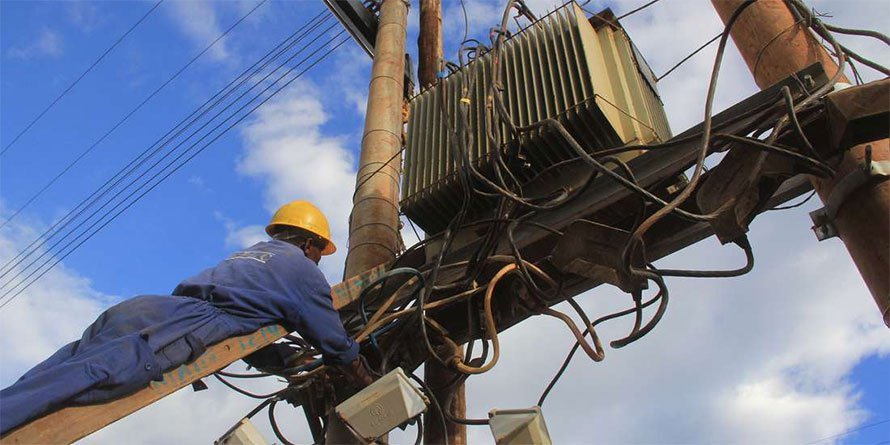A Kenya Power technician working on a transformer. FILE PHOTO | NMG From media reports one can discern an electricity subsector under enormous stress. The power distributor (Kenya Power) has complained about EPRA (Energy and Petroleum Regulatory Authority) licensing processes. Kenya Power is also under cashflow pressures as tariff increases remain unapproved by EPRA. The main power generator (KenGen) complains of delayed payments from the distributor, and failure by the distributor to lift available production.
And consumers (domestic, institutional, and industrial) are unhappy with high billings, and frequent power outages. Yes, electricity is an arena where no one seems to be winning, pointing to an expensive and inefficient power sector with critical pinch points in its supply chain.
My thinking is that the power sector is trying hard to grow and modernise but is held back by electricity demands that have refused to grow. Despite the national economy showing GDP growth year after year, the total electricity demand is a meager 1,912 MW, an insignificant demand for a country that aspires to become a developed nation. By now Kenya should be consuming upwards of 5,000 MW, and with an assured growth of about 5 percent annually.
Whereas lighting and appliances provide the baseload electricity demand, it is the “electric motors” in industrial and mining settings that would be driving significant increases in electricity demands. In any economy, it is manufacturing and mining activities that are most “electricity intensive”, while also being great GDP drivers.
Kenya’s liberal policies on imported consumption; slow success in creating new industries; slow recovery of collapsed agricultural industries; and an apparent absence of coordinated development of the mining sector, have all conspired to stagnate potential for electricity demands growth.
Acceleration of agro-industries and revival of sugar mills, paper mills, ginneries, cotton mills, pyrethrum plants, timber sawmills will significantly increase power demand growth, while also reducing imports. Specifically, the CS for agriculture should be supported to revive sugar, cotton and pyrethrum crops and their processing capacities. Development of already identified mining potential will similarly deliver increased electricity demands, while simultaneously delivering more jobs.
Commercial energy in Kenya is mainly supplied from imported petroleum (75percent) and electricity (25percent). It is the petroleum that has been the main GDP energizer especially in transportation and construction sectors. The services sectors, which have traditionally contributed to GDP success, do not consume much electricity.
Most of our power plants are by global standards small (less than 200 MWs) […]
